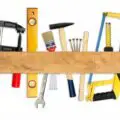Power Tools
How To Become A Woodworker
Ask any woodworker, and they will tell you that nothing is as fulfilling as crafting something with your hands from start to finish—exactly what a woodworker does daily, ideally; whether you craft furniture like tables and chairs or complex items like instruments, a woodworker uniquely converts raw materials into appealing and operational works of art.
A woodworking career is hugely rewarding but somewhat challenging. Even experienced woodworkers constantly face the challenge of adapting to different techniques, wood types, and complex projects. This craft blends mathematical, physical, and technical skills rendering it a fantastic career choice for anyone who prefers a hands-on approach to formal training.
If you are interested in pursuing woodworking either as a career or to fulfil your hobby, this guide is exactly what you need to get started. This post discusses the steps and skills necessary to become an expert woodworker.
But first, what is woodworking?
What is Woodworking?
Woodworking is the art of producing objects from wood using power or hand tools. The art covers decorative items like moldings, appliques, wall art, and functional pieces like cabinetry and furniture.
Who is a Woodworker?
A woodworker is a craftsman who utilizes woodworking skills to produce wooden items. Although this may appear similar to typical carpentry, there is a notable difference between the fields.
The difference between carpenters and woodworkers is that carpenters are mostly stationed on construction sites joining and cutting wood to fashion buildings and several other structures. Also, carpenters can install various wood items made by woodworkers, like furniture or cabinetry.
There is also a difference between woodworkers and woodcarvers. Although the primary focus of woodworkers is cutting and joining wood pieces together to build wooden objects, woodcarvers mainly use a chisel to carve out wood figurines or sculptures.
What do woodworkers do?
Woodworkers are professionals or DIYers who create objects with veneers, wood, and laminate, among other materials. Their primary role is to design, create, and install wooden items like shelves, furniture, and cabinets.
Woodworkers can also integrate other materials into the wooden structure designs, like glass, metals, and ceramic tiles. A woodworker usually specializes in several woodworking categories, including furniture finishers, finish carpenters, cabinet makers, builders, and makers.
Here are some of the critical processes that a woodworker is generally involved in:
Reading and interpreting planning documents like schematics, blueprints, and architectural drawings.
Installation, repair, and maintenance of woodworking tools and equipment
Discussing function and design with clients
Manipulation of laminate, veneers, wood, and other distinct materials.
Operation of heavy woodworking machineries like sanders, saws, and even computerized numerical control devices
Pick out, buy, and transport necessary woodworking materials like wood
Preparation of pieces for fitting with electrical components, glass, and other elements like stone
Attachment of hardware such as knobs and drawer pulls, using adhesives and fasteners when necessary.
Paint, stain, or seal final products
Top 3 best steps on how to become a woodworker
Woodworking is an exclusively skilled profession that mandates proper training and practice-most of it, usually learned throughout the job. Ideally, learning this art requires interest and hands-on experience with tools, machinery, and raw materials. This is in addition to know-how to help understand measurements and plans and translate them into a final product.
Whether you learn from other expert woodworkers or pursue a college degree/certification in woodworking, there are several paths you can take to become a woodworker. Here are the most important ones:
Develop an interest in woodworking
Woodworking is an evolving profession, a reality that means that most modern woodworking projects extend beyond the typical image of artisans carving simple furnishings by hand. Ideally, modern woodworking now involves crafting mass-produced products that mandate heavy machinery operation and close adherence to the stipulated blueprints & instructions.
What's more, some wood materials may entail the installation of electrical components. Therefore, it is prudent to familiarize yourself with all the nitty-gritty of this field to identify your ideal suit.
Apprenticeship or Vocational Training
Typically, while there are many DIYers in the woodworking industry, this is a profession you should learn in vocational training programs. Why? The expertise you get in professional training offers you an unmatched advantage in expertise and networking. Furthermore, with woodworking getting more digitized, many employers now prefer formally educated woodworkers over DIY-ers.
Various vocational and technical schools, universities, and community colleges have multiple relevant woodworking programs, such as furniture design, carpentry, and basic woodworking.
Similarly, an apprenticeship is also a proven way to boost your woodworking skills and expertise. Besides learning how to visualize, plan, and complete your projects, apprenticeship teaches you essential safety and health regulations through mentorship on the job. Technical schools, research job boards, professional woodworking associations, and industry professionals around you are good apprenticeship options. After completing your apprenticeship, you can certify and work independently or get permanent employment in the institutions.
Identify & Invest in a specialty.
In your quest to understand and engage in woodworking activities, you may find yourself gravitating toward some specific woodworking niches among them:
Cabinetmaking and bench carpentry: This niche involves designing benches and cabinets for specific places. Here, you will read blueprints and determine whether the cabinets meet all required specifications. A cabinet maker can also install a finished cabinet.
Furniture finishers: In this nice, you will work to repair and restore damaged wood pieces, including antiques. A furniture finisher must determine the best techniques and items to help preserve damaged furniture. These professionals complete the ultimate furniture production stages, including sealing, staining, and adding topcoats.
Operators, saw setters, and tenders: These are woodworkers whose specialty lies in machinery that saws wood pieces, among other materials.
Woodworking operators, machine setters, and tenders: finally, woodworkers in this category work with diverse woodwork machinery besides saws like lathes, sanders, planers, drill presses, and routers.
What Skills do you need to become a woodworker?
As a woodworker, you must be capable of solving mechanical issues and tool usage. Woodworkers calibrate, prepare, repair, and maintain various woodworking instruments and machinery.
Furthermore, they must have the technical and mathematical know-how necessary to understand, plan, and execute a job-not to mention the superb hand-eye coordination and physical ability to work on the projects.
Besides this, woodworkers also need to know the following:
Know vital woodworking processes like staining, varnishing, and sanding
How to start, work on, and complete projects in all aspects
Understand how and when to utilize vital tools and machinery like drills and saws
Understand varying wood qualities and applications with knots, cuts, and woodworking-associated techniques.
Why You Should Trust Us
At Woodworking Tool Guide, we know one size doesn't fit all! We cater to every woodworker, from beginner to pro, with insights and recommendations tailored to your skill level, project needs, and budget. We take the guesswork out of choosing the right tools, whether you're tackling your first crafting a masterpiece for the ages. So grab your chisel, join our community, and let's build something amazing together!
Woodworking Tool Guide wasn't just born, it sprouted from a seed of passion for the craft. What started as a joyful exploration blossomed into a trusted online haven for fellow enthusiasts like you. We pour our love into meticulously chosen review selections, meticulous hands-on testing, and lab-backed insights, all to empower you with reliable, comprehensive information you can build on. So, grab your tools, trust our guidance, and let's build something beautiful together!
Passion-Driven Expertise
Our journey started with a shared love for woodworking. The team behind the Woodworking Tool Guide is comprised of individuals who are not just writers but passionate woodworkers themselves. This shared enthusiasm ensures that our content is crafted with a deep understanding of the craft and an authentic appreciation for quality tools.
Top Tool Guides Online
Woodworking Tool Guide has rapidly ascended to become one of the premier online destinations for tool guidance. Our commitment to excellence and the accuracy of our information has positioned us as a reliable source for both beginners and seasoned woodworkers seeking trustworthy advice on the best tools for their projects.
User-Centric Approach
Our content caters to every woodworker, from rookies just starting out to seasoned pros tackling intricate projects. We tailor our insights and recommendations to your skill level, project needs, and budget, ensuring you find the perfect tools to match your unique woodworking journey. So step into your workshop, grab your tool belt, and let Woodworking Tool Guide be your trusted companion as you craft your masterpieces.
Continuous Support and Innovation
Woodworking is an ever-evolving craft, and so is our commitment to supporting you. We are dedicated to bringing you the latest information on woodworking tools, techniques, and trends. Our team is actively working to expand our content and bring you more valuable insights, ensuring that you stay well-informed in your woodworking adventure.
Hands-On Experience
Ditch the endless research rabbit hole! At Woodworking Tool Guide, we believe in actionable advice, not armchair analysis. We get our hands dirty, putting every tool through its paces in real-world woodworking scenarios. Whether it's the precision of a table saw, the versatility of a router, or the tactile satisfaction of a handplane, we test for performance, durability, and user-friendliness. No more sifting through dry specs – we deliver practical insights you can trust to transform your woodworking dreams into reality.
Woodworking Tool Guide isn't just a review site, it's your trusted companion on the sawdust-filled path to woodworking mastery. Our expert team, led by veteran David Jones, meticulously tests and explains tools in terms you understand. We cut through the jargon, bias, and confusion with real-world insights and honest evaluations. Join our passionate community, where decades of experience, cutting-edge knowledge, and shared love for the craft come together to guide you every step of the way. So grab your chisel, buckle up, and let's embark on this exciting woodworking adventure, together!
Final Word
The craft of woodworking generally strikes the perfect balance between function and form. A woodworker applies their creativity to envision and independently interpret ideas, in addition to knowing how to measure and carve wood items accurately per the measurements.
Ultimately, by applying these skills and following this guide, you will get the basic idea of how and where to start your woodworking career, not to mention the fulfillment of knowing that their finished woodworking products are functional and will serve their purpose for years to come.
Good Luck!





